How to cut raspberries - we form bushes correctly and in a timely manner
Raspberry is an extraordinary shrub that bears fruit with delicious berries with a delicate aroma and unique healing properties. Shoots bear fruit only in the second year of planting, after which the two-year-old shoots die off. And at this stage, novice gardeners are faced with the need to first care for raspberry bushes.
Content:
- When to prune raspberries?
- Tips for Increasing Raspberry Yields
- Pruning single-bearing varieties
- Pruning remontant raspberries
When to prune raspberries?
Experienced gardeners know that raspberry bushes have one characteristic. Its two-year-old shoots die off after fruiting and they need prune... Such care will be the key to the raspberry harvest next year. Therefore, it is important to do it right and on time.
Shoots that have already borne fruit are cut at the very root at the end of summer, preferably closer to ground level, so as not to leave hemp. By removing old shoots, you can also remove weak and diseased shoots. The optimal amount that needs to be left on 1 meter of the plot is 8-12 shoots, they will have enough light and space for good fruiting next year. All cut dead wood must be removed from the site and burned.
Experienced gardeners recommend shortening the tops by 10-15 cm in early spring, cutting off the shoots to the first bud. This slows down the growth of shoots, nutrients go to the buds, which will make it possible to get an excellent ripe crop in the middle of summer.
Tips for Increasing Raspberry Yields
In order for the raspberry crop to ripen not at the same time, but throughout the summer, experts recommend pruning different raspberry bushes to different heights. To do this, you need to divide all the raspberry bushes into three parts. The first part of the raspberry in early spring should be cut as usual by 10-15 cm, the second part of the raspberry is cut to half its height, and the third part is left with shoots only 15-20 cm long. In the same sequence as the bushes are cut out, useful berries will ripen.
Many gardeners advise using the double pruning method to increase yields. To do this, at the beginning of summer, 5-7 cm from the top are cut off from bushes about 1-1.2 m high. Due to such pruning, nutrients begin to actively flow to the lateral buds, and by the beginning of autumn 4-8 strong young lateral shoots 50 cm long will grow. It is necessary to bend these young shoots to the ground so that they winter under the snow. In early spring, side shoots are shortened by 10-15 cm, which guarantees the appearance of new branches and high productivity.
It is important to prune raspberries, following the advice of seasoned gardeners, since late pruning can lead to crop loss, because young shoots will freeze. The double pruning method can be used for any type of raspberry. To obtain a large harvest, it is necessary to carefully monitor that all agrotechnical measures are carried out on time, so that the raspberry bushes are watered and fed.
Pruning single-bearing varieties
When pruning raspberries, experienced gardeners recommend that you take into account which variety the bush belongs to, it bears fruit once a season or several. Cropping has some peculiarities. Cultivars that bear fruit once during the growing season are pruned according to the procedure described above, i.e. observing the following steps:
- in the fall, shoots are cut from which they have already harvested;
- pruning dry and diseased branches;
- one-year-old shoots are thinned out;
- in early spring, the tops of the shoots are shortened.
Pruning remontant raspberries
Repaired raspberry varieties appeared quite recently. These varieties make it possible to get a crop twice a year. In the first two years, caring for raspberries of remontant varieties is quite ordinary: watering, loosening, feeding. After the first fruiting, some of the shoots die off and must be cut off. The remaining shoots will bear fruit next year.
Better trim repairing varieties in late autumn, collecting all the last berries. After harvesting, it is necessary to cut off the entire aerial part of the raspberry. All garbage collected from the site is carefully collected and burned to prevent the spread of diseases. The garden plot must be loosened to a shallow depth and watered abundantly.
The next year in the spring, these annual shoots will be strong and healthy. And, therefore, they will give an excellent harvest. Since the raspberries were cut to the ground and reliably covered under the snow, this guarantees a quick recovery of shoots and buds. And due to the fact that there were no shoots left above the ground for the winter, these bushes will be healthy, the pests simply had nowhere to accumulate.
In order to get an early harvest of remontant varieties of raspberries, you can clean the shoots from snow in early spring and cover them with a black film. Under these conditions, the growing season will start two weeks earlier.
Care for raspberry bushes, of course, a troublesome business. But if you do everything right, then raspberries will delight gardeners with a generous harvest of amazingly fragrant berries. And its healing properties cannot be compared with any cold medicine. Therefore, it is very important to grow an excellent harvest and keep it for future use.



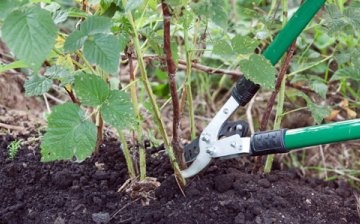
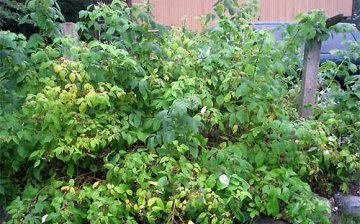






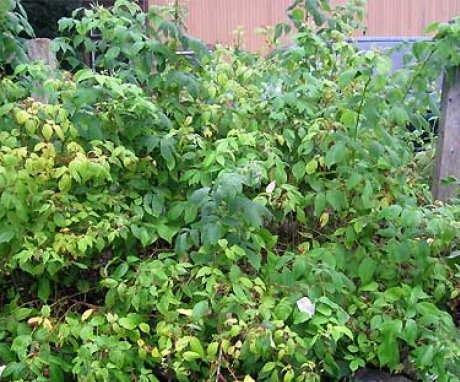
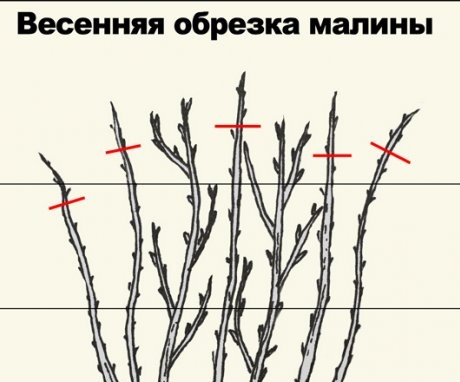
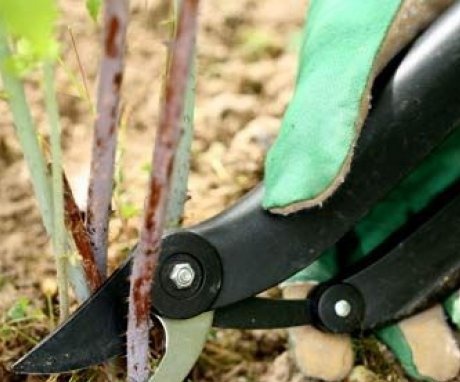
Is it true that pruning raspberries will save them from the cucumber mosaic virus? I was told that if the pruning is done correctly, the bush can still be saved ... Is it really not the root of the matter?
I cut off the raspberry shoots, only those that have already borne fruit, they are clearly visible by their brown color, and I leave all the green shoots in a row for next year. I also remove all the raspberries that have grown in the aisles.